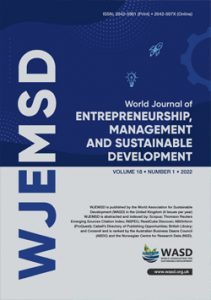Influence of intersections on the performance of position-based routing protocols for VANETs: A case study – smart cities, Ali Mansoor, Adel Sarea and Dr. Aznul Sabri
 Ali Mohammed Mansoor, Dr. Aznul Qalid Md Sabri
Ali Mohammed Mansoor, Dr. Aznul Qalid Md Sabri
Faculty of Computer Science and Information Technology
University of Malaya, Kuala Lumpur
Malaysia
Email: ali.mansoor@um.edu.my
Adel Mohammed Sarea
Ahlia University, Manama
Bahrain
DOI: 10.1108/WJEMSD-08-2017-0056
Purpose: The vehicular ad hoc network (VANET) is an emerging area for smart cities as observed in last few decades. However, some hurdles for VANET exist that need to be resolved before its full implementation in smart cities. Routing is one of the main factors for having effective communication between smart vehicles that urgently needs to be addressed. One factor that affects communication between the vehicles is the intersection points that obstruct the communication. The paper aims to discuss these issues.
Design/methodology/approach: The conventional routing schemes fail to address the intersection problems that occur during the two points of communication. Therefore, this paper analyses the performance of existing position-based routing protocol for inter-vehicle ad hoc networks, considering the impact of a number of intersections. This simulation evaluates different position-based routing protocols such as Intersection-based Distance and Traffic-Aware Routing (IDTAR), Greedy Traffic-Aware Routing, Anchor-based Street and Traffic-Aware Routing and Geographic Source Routing, based on road topology and the number of intersections.
Findings: As a result, the protocol IDTAR has a lower end-to-end delay and high packet delivery ratio in terms of the number of intersections as a case study of smart cities. This concludes that IDTAR can be adaptive to smart cities communication, although some questions need to be considered in terms of its security, compatibility, reliability and robustness.
Practical implications: The role of VANET has been highlighted in smart cities due to its implications in day-to-day life. The vehicles in VANET are equipped with wireless communication nodes to provide network connectivity. Such types of network operate without the legacy infrastructure, as well as legacy client/servers.
Originality/value: Additionally, the study contributes to smart cities by measuring the performance of position-based routing protocols for VANETs.
Keywords: CBR; Dijkstra algorithm; Glomosim; Greedy routing; VanetMobiSim; VANETs.
Citation: Mansoor, A.M., Sarea, A.M. and Md Sabri, A.Q. (2018), "Influence of intersections on the performance of position-based routing protocols for VANETs: A case study – smart cities", World Journal of Entrepreneurship, Management and Sustainable Development, Vol. 14 No. 2, pp. 168-177. https://doi.org/10.1108/WJEMSD-08-2017-0056

